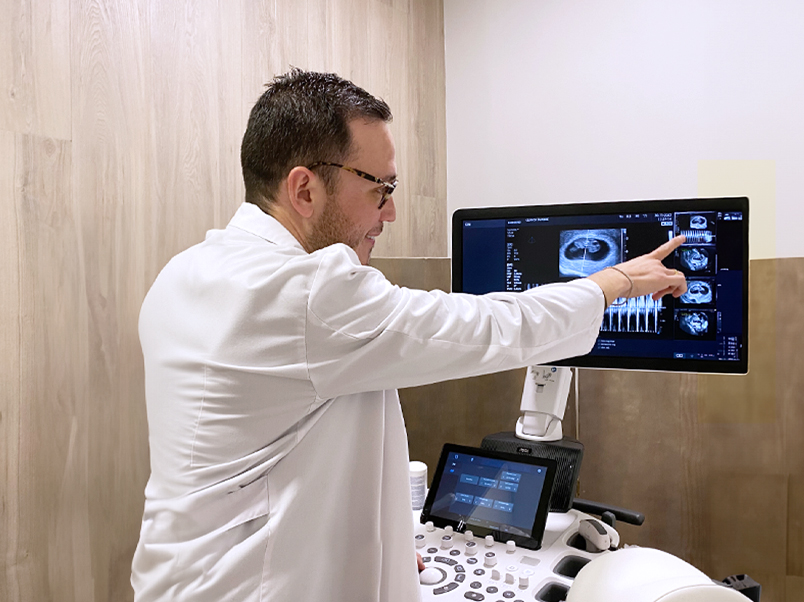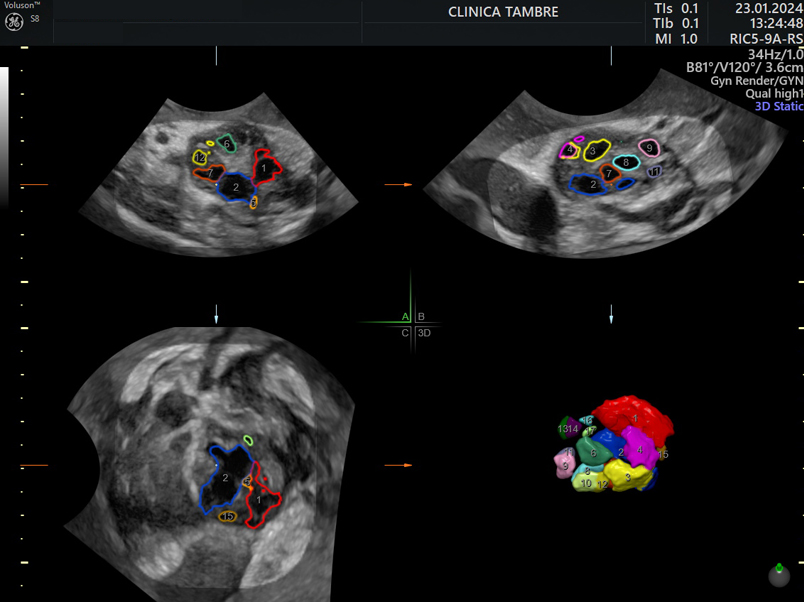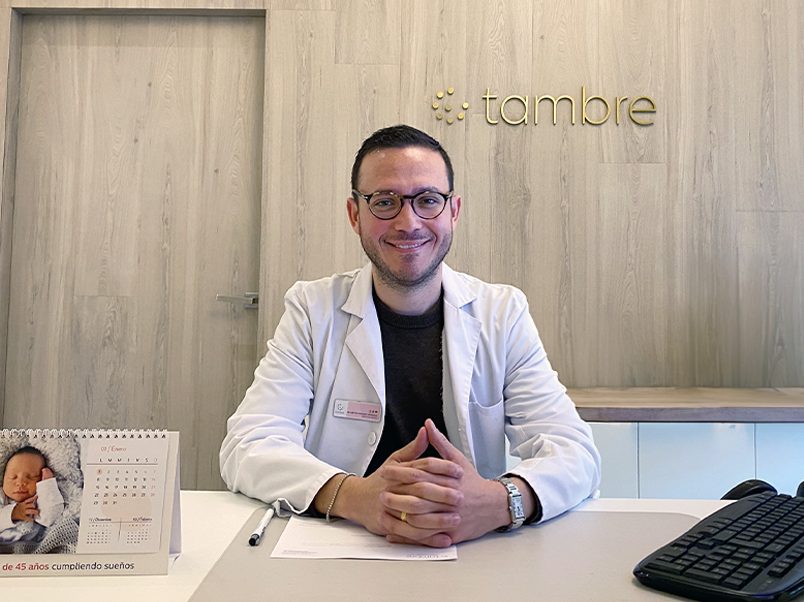Table of contents
The antral follicles count is one of the most common tests performed at Tambre to determine patients’ ovarian reserve. The information provided by this test not only allows us to assess fertility status in relation to age, but also helps us to diagnose certain diseases such as polycystic ovary syndrome (PCOS) and provides us with essential information to guide the hormonal treatment for IVF.
Here we explain what the antral follicles count consists of, how we perform this test at Tambre, and what decisions can be made, taking into consideration the results.
What are antral follicles?
Antral follicles are small fluid-filled sacs found in the ovaries. Each antral follicle contains an immature egg that has the potential to mature during the menstrual cycle either naturally or under ovarian stimulation in the context of fertility treatment.
Antral follicles begin to form before birth. However, the development and maturation of follicles continues throughout a woman’s reproductive life. During each menstrual cycle, several antral follicles compete to reach maturity and ovulate during that cycle, but usually only one will mature and wait to be fertilised in the fallopian tubes.
The rest of the antral follicles, which do not reach ovulation, disappear. And if there is no pregnancy, a few days before menstruation, new antral follicles begin to grow.
The number of antral follicles that a woman produces in each cycle is directly proportional to her ovarian reserve and is independent of fertility treatment. The number is determined by the patient themselves and cannot be modified by the doctor.
How do we count antral follicles in Tambre?
The count should be carried out as the antral follicles begin to grow, usually 3 to 5 days into the menstrual cycle. All that is needed for this is a transvaginal ultrasound scan, which can be performed in the examination room of the doctor’s office in just a few minutes.
It is a simple, painless test that does not require anaesthesia. Your doctor will count the antral follicles that measure between 2 and 10 mm, as these are the ones most likely to mature and be fertilised.
If the antral follicle count is between 10 and 20 follicles, the ovarian reserve is normal. On the other hand, if the number is less than 10, the ovarian reserve is considered to be low.
What is antral follicle counting for?
Antral follicle count is an important tool in the assessment of female fertility, as it provides crucial information for the planning of assisted reproductive treatments:
- Assessment of ovarian reserve
The antral follicle count allows us to know a woman’s ovarian reserve, i.e. the number of eggs she has in her ovaries at any given time.
However, there are other complementary tests that help us to evaluate the ovarian reserve, such as a blood test to check the presence of FSH (follicle stimulating hormone) and to know the levels of oestradiol and LH hormone. It is also essential to know the levels of anti-Müllerian hormone, which is directly related to the production of the ovaries and informs us of the approximate quantity of oocytes available, although not their quality.
- Prognosis of response to ovarian stimulation
It is possible that if the number of antral follicles is low, the response to IVF hormone treatment may also be low, known in clinical jargon as “low response”. Therefore, the antral follicle count can help predict how a woman will respond to ovarian stimulation and indicate the dosage and drug protocol required.
- Fertility treatment planning
The information provided by the antral follicle count is essential for fertility treatment decision making. It helps Tambre professionals to personalise the therapeutic approach, adjust treatment doses, determine the right timing for procedures such as IVF and, ultimately, maximise the chances of success.
- Identification of possible fertility problems
A lower than expected antral follicle count can be a sign of decreased ovarian function and may indicate potential fertility problems. This allows us to take early action to address any underlying problems.
Personalised treatments
Once we have the antral follicle count, alongside the results of any additional tests undertaken, we can consider and adjust different treatments:
- Normal antral follicle count.
In case the count is considered normal for the patient’s age, we can follow standard ovarian stimulation protocols for treatments such as IVF or artificial insemination. Since we consider the ovarian function to be normal, we can look for other causes of infertility (endometriosis, male factor, etc.).
- High antral follicle count
If the antral follicle count is higher than usual (more than 20 follicles), it is possible that there are problems related to polycystic ovary syndrome and therefore less hormonal stimulation is needed during fertility treatments such as IVF. The aim is to avoid ovarian hyperstimulation, which is a potential risk in these cases.
- Low antral follicle count
If the number of antral follicles is less than 10, we would consider that the patient has a low ovarian reserve, which implies an increased risk of low ovarian response during stimulation. Therefore, higher doses of drugs or more specific approaches may be necessary to optimise ovarian response.
If, in addition to having a very low number of antral follicles, the woman is older than 40, it is always worth discussing oocyte donation treatment as one of the options
Whatever the result of the antral follicle count, it is important to stress that at Tambre we assess the fertility of each woman or couple based on all of the diagnostic tests undertaken as a whole. Once a diagnosis has been made we can then recommend a personalised treatment plan based on the specific circumstances of each patient.
At Tambre we specialise in complex cases. We deliver Advanced Reproductive Medicine, using the most innovative treatments and technology to achieve high pregnancy rates.
If you would like to know the status of your fertility and your ovarian egg reserve, contact us and make your first appointment at Tambre now by calling +44 (0) 20 38 688 650.




